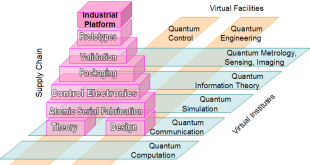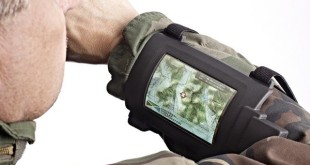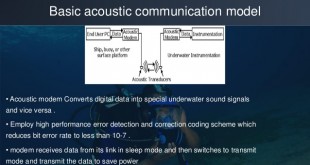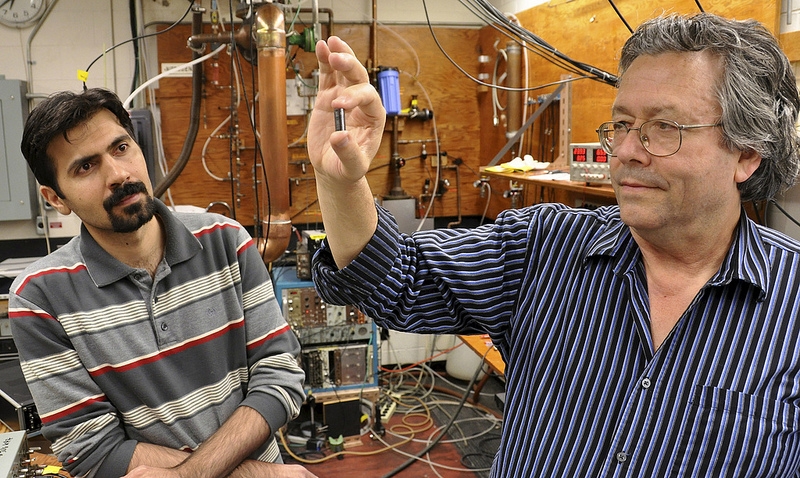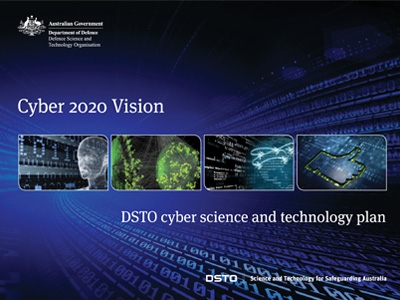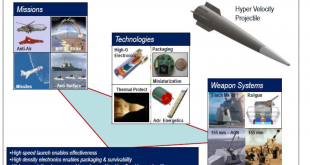Traditionally, quantum science has been a domain of fundamental research explored mostly by physicists. At the current state of the art the basic properties of the systems considered for realizing quantum hardware are understood at a great level of detail. Now, it becomes increasingly more important to develop quantum systems which …
Read More »TimeLine Layout
April, 2021
-
17 April
Flexible displays enable lighter-weight, lower-power, more-rugged smartphones , soldiers wearable and vehicle applications
With the flat panel display having already been widely used more than 40 years, there have been many desired changes in the display technology, focusing on developing a lighter, thinner product that was easier to carry and store. A flexible display or rollable display is an electronic visual display which …
Read More » -
15 April
Underwater Acoustic Wave (UWAC) Communication technologies including Acoustic Modems enable Unmanned Underwater Vehicles (UUWs) missions
Approximately 70% of the Earth’s surface is covered by water, yet almost 95% of the underwater world remains unexplored. Nearly 4000 robots are swimming up and down in the world’s oceans, which allow scientists to measure and understand ocean dynamics, like the directions and speeds of currents, as well as …
Read More » -
15 April
Fuel cells technologies enabling less expensive, durable, eco friendly power on-demand for transportation and military systems
Since the Industrial Revolution, the environmental impacts of energy have posed a concern. Recently, this has driven researchers to search for viable options for clean and renewable energy sources. Due to its affordability and environmental friendliness, hydrogen is a feasible alternative to fossil fuels for energy applications. However, due to its …
Read More » -
13 April
Heterogeneous computing architecture for emerging digital warfare
The world of high-performance computing is particularly challenging, as new flavors of sophisticated sensors, complex cameras, and the requirements of Advanced computations, which include Software-Defined Radio, cryptography, and other types of arithmetic-intensive algorithms. Recent developments in artificial intelligence (AI) and growing demands imposed by both the enterprise and military sectors …
Read More » -
11 April
Multi-factor authentication has become essential to protect accounts in commercial and military
The traditional, not so secure way to log in to your bank account: enter your username and that familiar password you probably use for most of your online accounts. Then, you’re in. You can go about your business. If you’re one of the 54% of consumers who, according to TeleSign, …
Read More » -
10 April
New Manufacturing technologies paving the way for Silicon or Solid-state quantum computing
Quantum bits, or qubits, are the basic building blocks of quantum computers, just as bits are that of modern computers. Researchers around the world have been exploring a range of different physical systems to act as qubits, including trapping and isolating ions by using electromagnetic fields, photons trapped in microwave …
Read More » -
10 April
Quantum Thermometer can measure temperatures inside a quantum computer to living cell
The world, say many experts, is on the verge of a second quantum revolution. The most talked-about of such technologies is the quantum computer, a device in theory so powerful that it could crack the codes underlying internet security in just a few minutes. But full-scale quantum computers are still …
Read More » -
6 April
Australia facing cyber attacks by sophisticated state-based cyber actor, implementing Cyber Vision 2020, cyber security strategy, cyber science and technology plan
The exponential growth of information and communications technology (ICT) technology that includes Internet, telecommunications networks, computer systems, and embedded processors and controllers, has led to creation of Cyberspace, a global domain within ICT. The economic, social and strategic influence is exerted within, and through cyberspace domain, much like the land, …
Read More » -
6 April
Gun-launched guided projectile (GLGP) or Hypervelocity projectile (HVP) to protect Surface Ships from large missile salvos by Russia and China
The US Navy is concerned about the survivability of Navy surface ships in potential combat situations against adversaries, such as China, that are armed with large numbers of missiles, including advanced models, and large numbers of UAV. In response, the Navy surface evolved a new organizing for the Navy’s surface …
Read More »
 International Defense Security & Technology Your trusted Source for News, Research and Analysis
International Defense Security & Technology Your trusted Source for News, Research and Analysis
